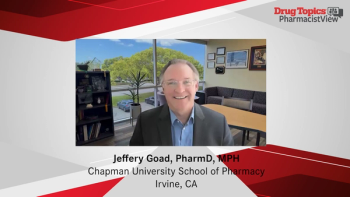
How to Encourage Vaccination Against Shingles
Pharmacists are in an ideal position to encourage people to be vaccinated against shingles.
Herpes zoster vaccination rates in the United States have already surpassed the CDC’s target for 2020-that’s the good news. The not-so-good news is that only about a third of the population that is at greatest risk is covered. More can be done to encourage vaccination, and pharmacists can help lead the way.
According to the
Medical epidemiologist Kathleen Dooling, MD, MPH, of the CDC’s Division of Viral Diseases says it’s important for adults to hear directly from their healthcare providers that they recommend the vaccine and that it will benefit them specifically. She admits that there are several obstacles to convincing older adults to be vaccinated.
“Unlike children, vaccines aren’t a regular and expected part of every visit to the doctor,” she notes. “There are a lot of competing interests as adults develop other chronic conditions that need to be addressed at an interaction with their healthcare provider. And these vaccines carry significant costs with them, sometimes an out-of-pocket cost in addition to what might be covered by insurance.”
Neurologist Anne Louise Oaklander, MD, PhD, director of the Nerve Unit at Massachusetts General Hospital, cites another obstacle. “Statistics have shown that there are real problems with uptakes of vaccines in the U.S. lately due to generally false concerns-the fake news-that has discouraged some people from getting vaccinated and from getting their children vaccinated,” she says. “Pharmacists need to help patients separate fake news from real news.”
The real news, according to both Dooling and Oaklander, is the effectiveness of the
“Older people have a double need to protect themselves against getting shingles to begin with and against being left with complications if they do get shingles,” says Oaklander. “Even in those cases of breakthrough shingles in somebody who’s been vaccinated, the severity of the shingles is so much less that people are exceedingly unlikely to have any of the dreaded complications-spinal cord damage, blindness, and deafness.”
Since local swelling and muscle aches sometimes develop after Shingrix, Dooling recommends that healthcare providers warn patients not to plan any strenuous activities in the days immediately following vaccination. “After either dose, people might not feel up to playing that big golf game or the extensive gardening they might have planned on a certain day,” she says. “Our general recommendations are to suggest ibuprofen or acetaminophen if side effects occur.”
Shingrix is contraindicated for people with a history of severe allergic reaction to any component of a vaccine or after a previous dose of Shingrix. People who are experiencing an acute episode of shingles should postpone vaccination until advised to do so by their primary care provider. The vaccine has not been studied in pregnant women or women who are breastfeeding; providers are advised to delay vaccination for these women. Shingrix can be given with other recommended adult vaccines.
Newsletter
Pharmacy practice is always changing. Stay ahead of the curve with the Drug Topics newsletter and get the latest drug information, industry trends, and patient care tips.






















































































































